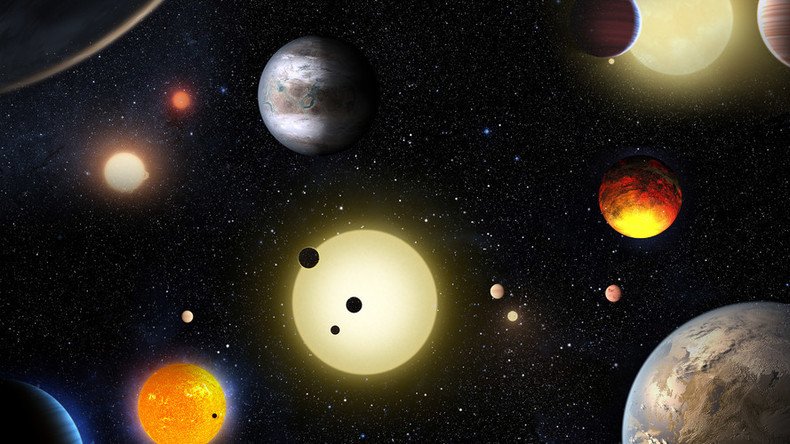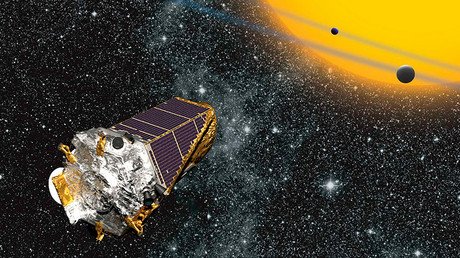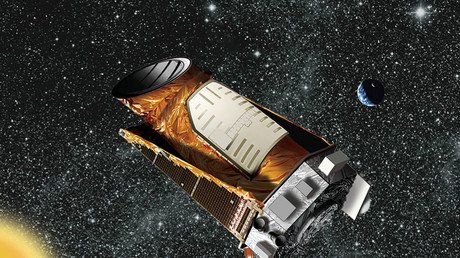NASA's Kepler telescope finds 9 potentially habitable planets

NASA's Kepler mission has confirmed 1,284 new planets, the largest single collection of verified planets ever and double the number of planets Kepler has found in total. Nine planets show signs of potential habitation based on surface conditions.
In the race to find habitable planets in the cosmos, the Kepler Space Telescope has identified 4,302 potential planets based on its July 2015 planet candidate catalog, NASA reported, 1,284 of which have at least a 99-percent probability of being a planet. Another 1,327 fell short of the 99-percent threshold needed to be considered a planet, while an additional 707 are likely to be "astrophysical phenomena," NASA said.
Nearly 5,000 total planet candidates have been found overall, NASA said. More than 3,200 of those have been verified as planets, with Kepler discovering 2,325 of those.
Kepler announces a planet boon- 1,284 new planets! This brings the Kepler count to 2,325.https://t.co/T3BValrvdRpic.twitter.com/zQ7pA7DZHW
— NASA Kepler and K2 (@NASAKepler) May 10, 2016
“This announcement more than doubles the number of confirmed planets from Kepler,” said Ellen Stofan, NASA's chief scientist in Washington. “This gives us hope that somewhere out there, around a star much like ours, we can eventually discover another Earth.”
Of the 1,284 verified planets, NASA said about 550 could be rocky like Earth. Nine of the 550 orbit close enough to their sun to allow for the existence of liquid water concentrations, bringing the total number of this class of planets to 21.
550 of the new Kepler planets are small possibly rocky; 9 of those reside in habitable zone.https://t.co/UgPRQTCEFwpic.twitter.com/5cR1tNb190
— NASA Kepler and K2 (@NASAKepler) May 10, 2016
"They say not to count our chickens before they're hatched, but that's exactly what these results allow us to do based on probabilities that each egg (candidate) will hatch into a chick (bona fide planet)," said said Natalie Batalha, co-author of the scientific paper published in The Astrophysical Journal and the Kepler mission scientist at NASA's Ames Research Center.
“This work will help Kepler reach its full potential by yielding a deeper understanding of the number of stars that harbor potentially habitable, Earth-size planets -- a number that's needed to design future missions to search for habitable environments and living worlds.”
The total known planet count jumps to more than 3,200. Here they are by size.https://t.co/UgPRQTCEFwpic.twitter.com/XLDh9oYKjC
— NASA Kepler and K2 (@NASAKepler) May 10, 2016
The Kepler Space Telescope was launched in 2009 to find planets similar in size to Earth and which may be able to support life. Over a four-year span, Kepler monitored 150,000 stars for any change in brightness that could come from a passing planet.
The method employed by Timothy Morton, lead author of the study, assigned "each Kepler candidate a planet-hood probability percentage – the first such automated computation on this scale, as previous statistical techniques focused only on sub-groups within the greater list of planet candidates identified by Kepler," NASA said. Researchers had previously analyzed prospective planets one at a time.
"Planet candidates can be thought of like bread crumbs,” said Morton. “If you drop a few large crumbs on the floor, you can pick them up one by one. But, if you spill a whole bag of tiny crumbs, you're going to need a broom. This statistical analysis is our broom."














